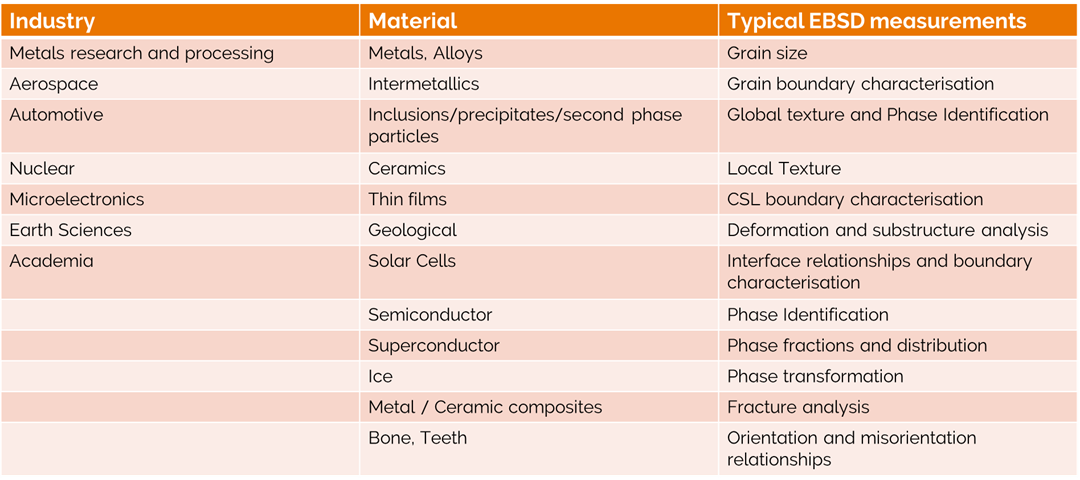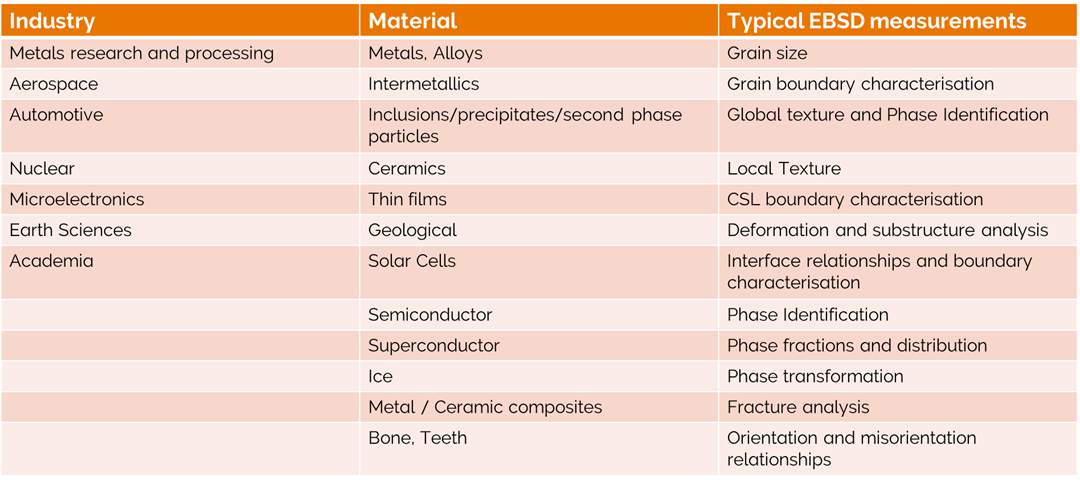Despite EBSD (Electron Backscatter Diffraction) having been around for many years, it is still an actively developing technique, seeing regular improvements in detector hardware, data acquisition software and post processing software. This is clear when you look at conference presentations as well as product announcements from the suppliers.
Having recently changed job role and put together a new introductory tutorial, it seemed like an opportunity to look back on the developments I have experienced in the technique.
My first exposure to EBSD was in 2004. I joined a small company in Denmark called HKL Technology in a service engineer role, mainly doing installations at customer sites and providing initial training. Back then, I regularly installed Nordlys detectors at customer sites where they had been using previous detector technology. This meant going from a system using a very basic camera and an external image processing unit, to a PC controlled system and a detector using CCD camera technology. After upgrading, the typical speed improvements were approximately 20-40 times faster. This made a huge difference for customers, as it became possible to acquire larger datasets or analyse more samples within the allocated SEM time.
When Oxford Instruments launched the Symmetry detector in 2017, I was working in the applications team in High Wycombe. The step change in technology to CMOS EBSD detectors again meant significant performance improvements in speed, resolution, sensitivity and versatility. This allowed customers to do so much more than they had been able to do before. Symmetry is ideal for a wide range of application and removed the dilemma of having to choose either speed or resolution when buying a detector. I still remember my first customer demonstration. Within the timeframe of a 2-hour demonstration, we acquired more data than the customer had previous been able to acquire over the course of a weekend. The speed of Symmetry meant that we were able to optimise microscope and demonstration time. Previous demonstrations could easily take the whole day and potentially involve overnight data acquisition. By the time lockdown occurred, we had already become used to doing relatively short remote Symmetry and AZtec demonstrations.
The hardware changes and new detectors are typically the most noticeable developments. However software for data acquisition and processing has also progressed enormously during this time period. This has made EBSD systems easier to use and better for a wider range of applications. Additionally, data processing has become much faster, easier to do and capable of extracting more information from the data without the need for writing your own processing modules. For more information see our library of blogs, such as What can EBSD tell us about dislocations in materials? - Nanoanalysis - Oxford Instruments (oxinst.com)
The combination of the software and hardware developments has made EBSD attractive to a larger user base, as it has slowly become less of an expert technique. Customers benefit from new applications in industry, where throughput and ease of use are important considerations for investment in equipment. The table below gives an overview of some of the materials and measurement types for which EBSD is currently being used, but this is constantly expanding.
Being involved in the development of Oxford Instruments EBSD systems over a number of years has been fascinating, particularly seeing the change in detector generations from the perspective of several different roles. I am particularly excited to see new users from all areas taking up EBSD and look forward to seeing how this will develop further over the coming few years.

Are you one of our new users or are you interested in refreshing your EBSD knowledge? Our latest tutorial “An Introduction to EBSD” goes back to some of the basics, explaining what EBSD is, what type of information it can provide and what it is typically being used for, as well as providing an overview of the latest hardware and software developments.
Hopefully the tutorial will give you a quick overview of the technique and of the current hardware and software. If you would like to know more, please take a look at our recently updated www.ebsd.com website and our library of introductory videos.





